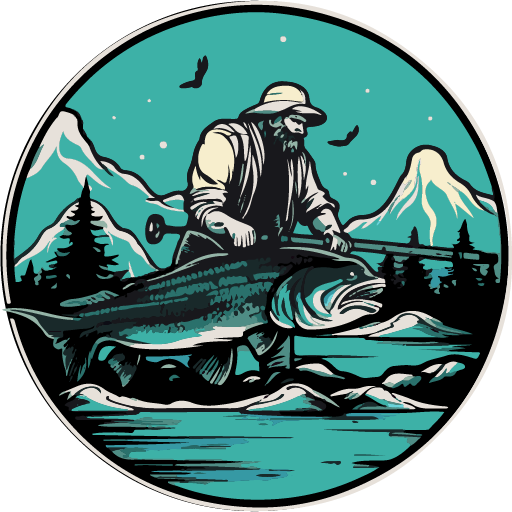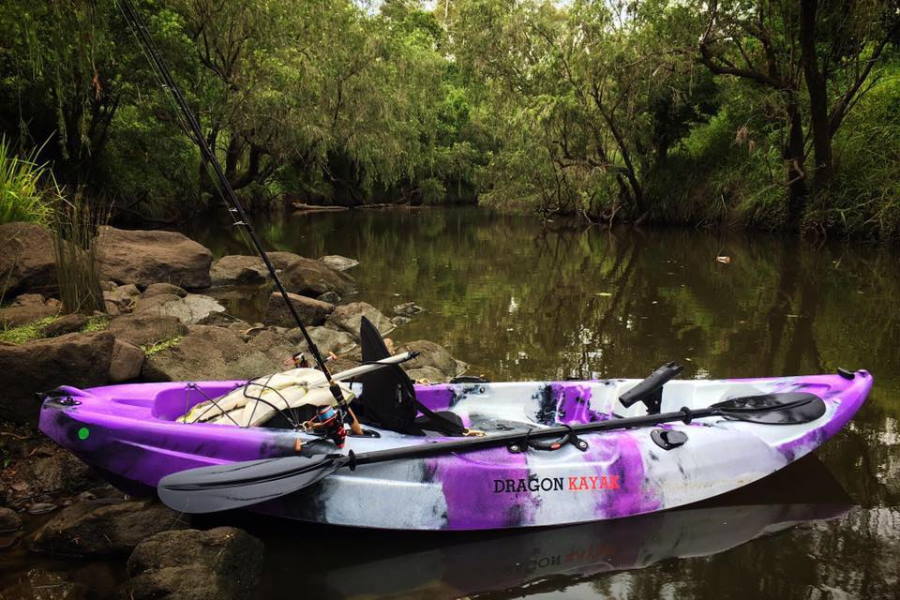About Kayak Fishing for Catfish
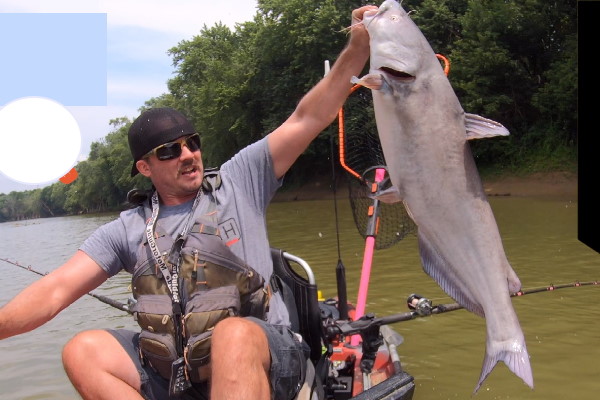
If you are looking for a fun and different way to catch catfish, kayak fishing is the way to go! Although catfish may not be as popular as bass or trout fishing from a kayak, kayak fishing for catfish can still be an enjoyable experience.
Kayaks provide a great stealthy approach to fishing for these bottom feeders like catfish, and with the right gear, you can have a lot of fun catching them.
In this blog post, we will discuss the basics of kayak fishing for catfish and some of the best tips and tricks for success. So, if you are ready to try your hand at kayak catfishing, keep reading!
Why Should You Try Kayak Catfishing?
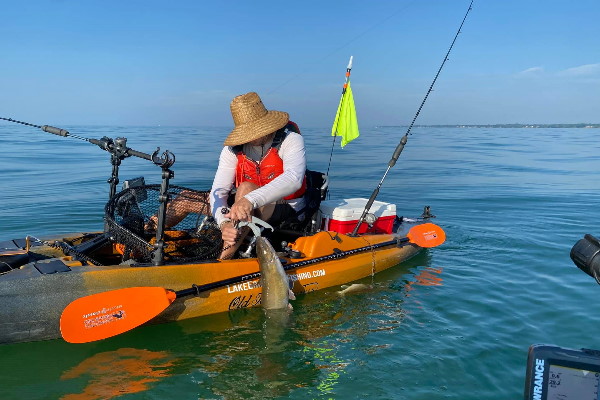
There are a few reasons why you should try Kayak Fishing for Catfish.
For one, catfish tend to hang out near the bottom of rivers and lakes, so a kayak allows you a closer approach to their level.
Secondly, kayaks provide a stealthy approach to fishing. Unlike powerboats or canoes, kayaks make very little noise and will not scare away the fish.
In addition, kayaks are more maneuverable than larger boats. So they allow you to get into tight spaces where the larger ones cannot reach. This advantage is ideal for fishing in most locate shallow, running water where catfish like to hide.
Finally, kayaks are relatively inexpensive and easy to transport, making them the perfect choice for anglers who want to try something new without breaking the bank.
You can read our other articles to see why many people prefer kayaks for fishing.
What You’ll Need – Kayak Catfish Gear
The great thing about kayak fishing is that you don’t need a lot of fancy gear to get started. All you need is a kayak, a paddle, a life jacket, and several fishing gears. Of course, certain kayak fishing accessories can make your experience more enjoyable.
The debate over which catfishing gear works best can rage on endlessly.
The two simple factors are depth and current, so try a few to see what you prefer before making your final decision based on these areas where fishing may vary depending upon where the fisherman fishes from (they’re going underwater).
Line strengths will also need adjusting depending upon how deep or close to shore he/she desires his catch but again, this is just one possible way things could go down while out there trying new techniques with our favorite game!
Some of my suggestions about gear options for catfish kayakers include
– Rod Holder: Catfish are known for their powerful fights, and you will want a perfect way to secure your rod while you reel in these feisty fish. Another thing is that you often need more than one rod for catfish fishing. The more rods you have, the more chances of taking a bite.
– Anchor: An anchor is another essential piece of kayak fishing gear, especially when fishing for catfish. A good anchor will help you keep your kayak in place so you can focus on fishing without worrying about drifting away.
– Fishing line: Light lines are tempting when fishing because they’re easy to use and can be gotten anywhere. However, it is one of the most common mistakes when catfishing. Even small cats have rough teeth and will abrade or cut through any fiber, even if it’s their preferred method for catching food like prey fish (which they often do).
They also habitually roll up in your bait which can sever lighter lines – so keep this factoid handy before going out on an adventure with only what you’ve got! A good rule-of-thumb during summer months would be 20 pounds minimum mono/braided line, but many veteran anglers prefer braid because these bottom dwellers aren’t always eager to take our hooks. They’ll put up quite the fight when they finally realize what’s happening!
– Hooks: Circle hooks are a must when fishing for catfish because catfish are notorious for swallowing the bait. The chance of hooking up increases dramatically with this type of hook, as it reduces the risk of getting gut hooked or having your line ripping through what feels like liquid metal.
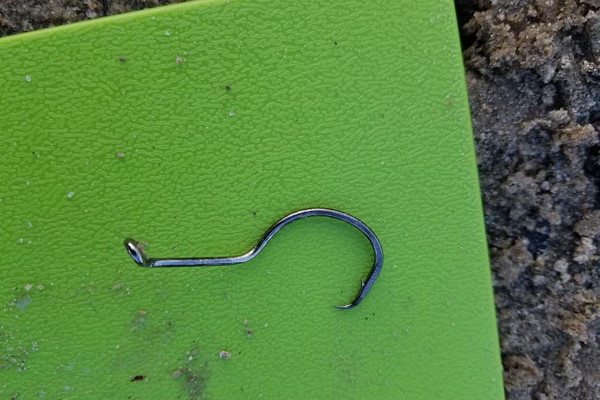
– Rods: For the constrained space of a kayak, you may want to use a shorter rod. A 6-7 ft fishing compatibility gives easy access and control when dealing with fish in your boat. Catfish can be arduous, so I recommend at least medium-heavy action for this type of water!
– Reels: Just like rods, reels are not much different when kayak fishing. For your reel go ahead and get something in the range of 10-15 lbs. It needs enough torque for compatibility with rod systems, so it doesn’t slip or backfire when casting at them–and line pickup is essential too. Make sure its drag setting not only allows free movement of one’s arms while fishing (which I would recommend) but also has some good “linework” on the screen. That means there will possibly always seem like plenty left over after filling up somebody else’s hook.
– Nets: Nets can be a great tool for landing fish, especially with fish with sharp teeth like catfish, but they’re bulky and inconvenient in kayaks. Consider getting a foldable net, fish-gripping device, or gloves to protect yourself!
– Fishfinder: A fish finder can be a valuable tool when catfishing, as it can help you locate concentrations of fish. It can also help determine the depth of the water and find structure, which are two necessary factors in catfish fishing.
Catfishing is a great way to enjoy kayak fishing, and with the right gear, it can be an incredibly productive method to fish.
These are just a few of my suggestions for kayak catfishing gear. There are many other options on the market, so do your research and find what works best for you and your kayak fishing needs.
Where to Go Kayak Fishing for Catfish?
There are many places to go kayak fishing for catfish, but here are a few of my favorites:
1. The Missouri River
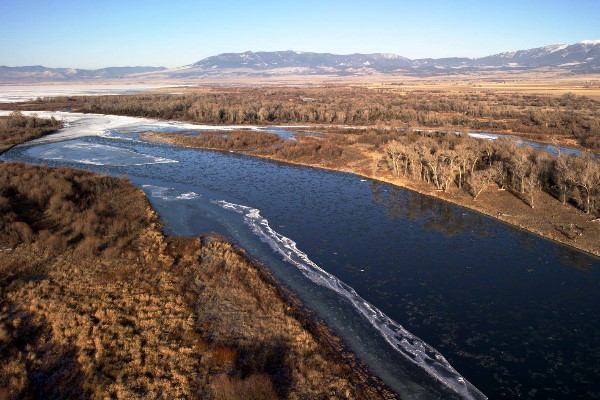
The Missouri river is often called “the meandering marvel of America”, and it’s not hard to see why.
There are plenty of fish species living along this long stretch from headwater creeks down into southern Minnesota due to its wide variety in temperate climate zones!
It’s home to trophy-sized flathead, bluegills, and channel catfish that are ideal for novice anglers looking to get their feet wet or seasoned fishermen who want an exciting challenge!
The long river means there’s plenty of opportunity at both ends – beginners will easily find lots of spots, while experienced paddlers may wish they’d brought more rods or reels.
2. The Mississippi River
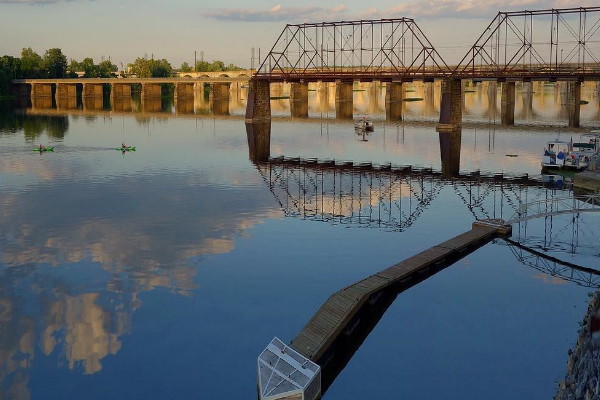
The Mississippi river is another excellent place to go kayak fishing for catfish. Stretching from Minnesota down to Louisiana, this river is home to a range of fish species.
Catfishing is one of the most popular sports in Mississippi. Flathead, channel, and blue catfish can all be found here, with some folks opting to go on guided fishing trips for big ones.
But if you want a challenge unguided, I recommend drifting through the main channels as blues love swimming there, whereas other types prefer slower-moving waters.
3. The Potomac River

If you want to find some of the most delicious catfish in America, head for a river near Washington D.C. – Potomac River, where they can be found no matter what kind or size they are!
From big blues and browns right down through flats with Indian Heads on their heads – this area has it covered when we talk about which type of feline friendliness prevails along our Nation’s riversides (and streams).
4. Lake Kapowsin
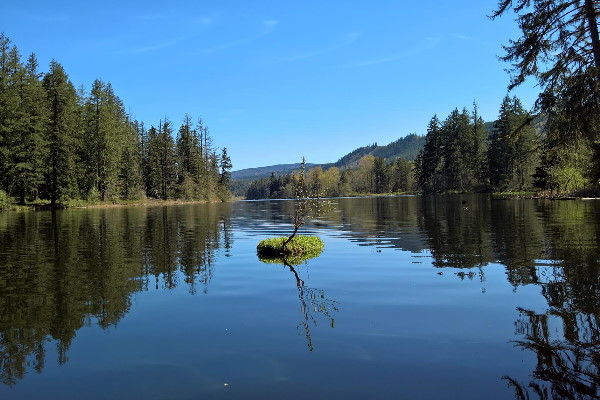
Lake Kapowsin is a beautiful freshwater lake in Pierce County, Washington.
It’s home to many species of fish, including bullhead catfish, which can be found throughout most parts of the TRY OUT OUR SERVICES TODAY!
And If you’re new to your kayaking skills or just looking forward to some good fishing opportunities, try out one of these spots around town- they are sure not going anywhere anytime soon with all those hillsides surrounding them.
5. Turkey Point, Chesapeake Bay

Turkey Point, a small fishing village located on the Chesapeake Bay in Maryland and Virginia, is one place where you can catch catfish.
This area has been known as an excellent location for catching these saltwater fish. It’s here that the state record for white catfish was set just two years ago (9 pounds).
While there may not be many giants like blues or blacks present, often swim up right next to your feet. You can still have a successful fishing session with dozens of smaller fish.
You can try fishing between the shipping channel and Elk Neck State Park in a range of 15- to 20 feet. You’ll often find nonstop action as you cast your line, so keep at it!
These are just a few great places to go kayak fishing for catfish. There are many other impressive spots across the country, so get out there and explore! And when you do, ensure to bring the proper gear and tackle to make your kayak fishing trip a success.
How to catch a catfish from kayak?
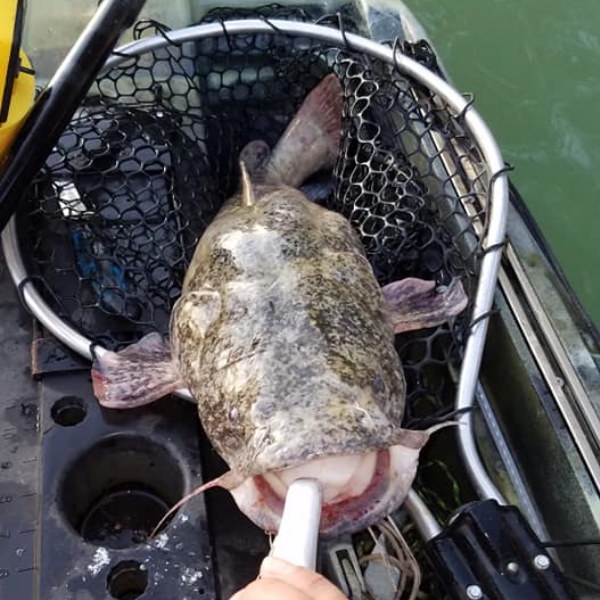
Find a hot spot:
Catfish are bottom feeders. The best way to start is by finding a deep hole or channel in the river. They like to hang out in these areas because they offer shelter from the current and plenty of food. Another good option is to look for submerged logs or rocks. These structures cover for the catfish and attract smaller fish that they feed.
Anchor the kayak
You’ll need to be in a relatively stationary position so that the fish doesn’t pull you away from your snag.
For catfish, position your kayak up-current from the hole you found for fishing. You’ll want to carry bait with current down toward where they live, so that’s why staying above their usual habitat can help!
To keep your kayak from dragging on the bottom, drop an anchor about 20-50 feet above where you want it to rest. Then attach one end of a rope or line through this device and let out some more so that when they pull hard against their weight in order not damage anything nor cause any harm with power boats running nearby. This way is only enough for small rivers/lakes without significant currents.
Patience
Catfishing is about patience – both in terms of waiting for a bite and then playing it out once you’ve got one on the line. But it’s all about enjoying being on the water and spending time with friends or family. So take your time, relax, and enjoy the process!
If you find your kayak moving in the current, likely, there is not enough scope on the anchor line. Reposition and try letting out more before locking off the rope.
Catfish are cool, calm, and collected. They don’t get excited about anything, so you won’t see them running around looking for food like other fish! Catfish feed by feel, which means if there isn’t much on the screen right below your line, don’t worry: once your bait has soaked up some water, they’ll go off in search of their meal without even realizing what hit them.
Fight catfish from a kayak
If you use a circle hook, they will do all the work for you. So don’t worry about setting it. Keep your drag tight, hold on firmly or set it up in a rod holder. When getting hit with their initial attack – a good rule is not to start reeling or fighting until your rod goes down and stays down. If you set the hook or try to fight before your line has a chance of getting caught on anything, you’re becoming endlessly frustrated (and lose way too much bait).
And there you have it. Everything you need to know about kayak fishing for catfish! Now get out there and give it a try!
What bait to use for catfish?
There are several different baits that you can use for catfish, but the most common and effective ones are:
- Chicken livers, chicken gizzards, and chicken breast: Catfish love chicken livers because they’re full of oil and smell bad – which attracts them from far away. For me, there is no better way than regular chicken breast cut up into baseball-sized chunks and soaked in garlic salt for dinner that night! Some say you can use Kool-Aid or even WD40 on top of hearing about all these crazy stories from people who claim their catfish caught one after another because they were dipped in holy water before throwing them back into Lake Michigan…
- Dough bait: This is a bait that is made of flour, water, and sometimes other ingredients like oatmeal or cornmeal. It’s easy to make, and catfish can’t resist it!
- Cut bait: Any fish or squid will work just fine. In addition, you let the bait’s amino acids flow toward your catfish’s taste organs by cutting or crushing a frog.
- Live bait: Many anglers say that live bait is the best for catfishing. The best type of bait for catching trophy-sized fish is live sunfish or bluegills. In Virginia, tidal waters bring in fresh-cut mud shad, which can be considered top when it comes to catches on your line!
In short, it’s a good idea to know the species of fish you are fishing. Blue cats prefer fresh dead bait over live, while flatheads go with either type, and channelers have an incredible sense of smell that can hone them in on any prey item they come across!
Tips And Tricks for Successful Catfish Kayak Fishing:
– Location, location, location: as we said before, catfish like to hang out in areas with little current and plenty of hiding spots. Look for submerged logs, undercut banks, and deep holes in the river. Kayak Fishing for Catfish is a good advantage, as you can use the kayak and fish finder to find hot fishing spots.
– Use the right gear: you don’t need the fanciest or most expensive gear to catch catfish, but you should make sure you have everything you need before heading out. A good kayak fishing setup for catfish would include a kayak with enough storage for all your gear, a comfy seat, a relatively stable platform to fish from, and an anchor system.
– Bait your hook: using the right bait is crucial, but so is baiting your hook correctly. Ensure you know how to rig your bait properly. So it stays on the hook and doesn’t fall into the water.
– Set the hook correctly: once you get a bite, it’s essential to set the hook properly, or you’ll lose the fish. Wait until you feel the fish before setting the hook, then reel in slowly and steadily.
– Landing the fish: once you’ve fought the fish tired, it’s time to land it. Gently bring the fish into your kayak and grab it by the lower jaw. If you’re using a net, get it under the fish’s belly. So you don’t lose it.
-Release the fish correctly: once you’ve landed the fish, it’s important to release it properly so it can swim away and be caught another day. Wet your hands before handling the fish, support its body from underneath, and use needle-nose pliers to remove the hook. Never pull the hook out with your bare hands
Catfishing is a great way to enjoy the outdoors and have a chance at landing a big one! By following these tips, you’ll be well on your way to success.
The Best Time of Year to Go Catfishing from Kayak
Kayak Fishing for Catfish, like many other outdoor activities, is most successful when conducted at the right time of year.
Many people think the best time to go kayak catfishing is in the spring and summer when the water is warm and the fish are active. In the fall and winter, the water is colder and the fish are less active, so you’re less likely to have success. Let me make it clear.
The perfect time to catch catfish can vary greatly depending on your target species and whether you are looking for bigger or smaller fish.
Spring
The first season of spring is an exciting time for fish and catfishing. As water temperatures rise, so do activity levels in the ponds! But what about those pesky transition cats? Catching them can be frustrating even if you’re an experienced angler because they often hang around until it warms up enough to make fishing easier again (or stay under ice).
Early spring is a perfect time for cat fishermen because these fish tend not only to be more eager than usual but also hungry due to their recent long winter nap!
The best time to catch blue cats is during March, April, and early May when they’re in abundance. You can also try your luck with trophy-class fish! Channel action has typically been excellent this time too. It’s not surprising how warm the waters have been this season. Flatheads become inactive during winter but come alive again when warm waters arrive- putting them right into a feeding frenzy once more before spawning time comes around once more!
Summer
Catfishing is significant in the summer. Catfishing is always exciting, but it’s even more so when you’re targeting spawning catfish. Cat Spawning periods often result from June through September but vary based on location.
The struggle to catch these elusive fish can be worth the effort. Fishing them can be more difficult if you’re after blues or flatheads.
Channel catfish can be caught in excellent numbers during spawning periods and offer fast-paced action.
Flathead catfishing is also typically good leading into the spawn time, with big fish being captured regularly by anglers looking to take advantage of this period between June through August when water temperatures are Warmer than usual for that area’s climate (80+ degrees).
The blue cat’s a bit tough; it becomes difficult after about month three or four because many male blue catfish have already bred once before. So they’re now swollen up quite nicely – which makes it hard to fit any more food inside the belly! The post-spawn blue catfishing offers some excellent angling opportunities as well.
Fall
In the fall, water temperatures drop, and fish move quickly to find stable oxygen levels before winter. Lakes with thermoclines experience a turnover period that can make fishing especially challenging for catfish, but this may be where you’ll catch big ones too!
As lakes turn over in late October, water temperatures stabilize, and fishing picks up quickly. Not only catfish are caught, but also large trophy-class catfish can be found during this time!
The falling water temperatures will put flathead cats into a feeding frenzy as they prepare to bulk up and add extra weight, which is perfect for anglers looking to catch large catfish.
Generally, from late October through November, lakes have turned over with stabilizing waters and excellent fishing opportunities on both blue or channel varieties of this common fish species outside of their specific types found within each body’s drainage system – but not always!
Winter
Catfishing during winter can be a great time because there are many options, such as cormorant fishing for numbers of fish and excellent action in deep or shallow water.
The winter is an excellent time to fish for blue and channel cats, but flathead catfish can be strenuous. Quite a few flathead catfish will bite. However, very few savvy anglers will target them with their bait or lures because they do not typically respond well in cold water. That makes sense why most experienced fishermen never bother catching such species when it’s colder than 60 degrees F outside!
Catfishing is always good, but there are certain times of the year when the fish only seem to be biting more than others. Below is my experience of the best time to catch specific species of catfish:
Blue catfish:
Blue catfish are exciting to catch all year long, though they can be challenging during the spawning season.
The best times for catching them come during early March and running through mid-April when there is lots of action with large numbers of blue cats and some trophy class ones mixed in as well!
Fall also offers good fishing opportunities as you might find yourself targeting red-hot “blue babies”.
For those who want larger species than just bluestems or balloon heads – December through February offer excellent chances at finding monsters, and they’re not always considered ‘classy’ enough by local anglers, so don’t be shy about throwing your net out.
Channel Catfish:
The summer is the best time to catch channel catfish, but you can still get them during other seasons. From pre-spawn, until water temperatures begin dropping in early fall, I find that there are more fish than in any season because they want Warmer Water for the baby boom generation!
The numbers of fish in both fall and spring are close seconds for catching channels, but when you’re looking at a red-hot action-packed with fishing opportunities in summer, you can be disappointed.
Flathead Catfish
September and October are the best times to catch flatheads. The fish feed heavily before winter, so they’re easy targets for your line or lure during this period!
As we approach March through May (pre-spawn), your chances are at some good Flathead.
Safety Tips for Catfishing from a Kayak
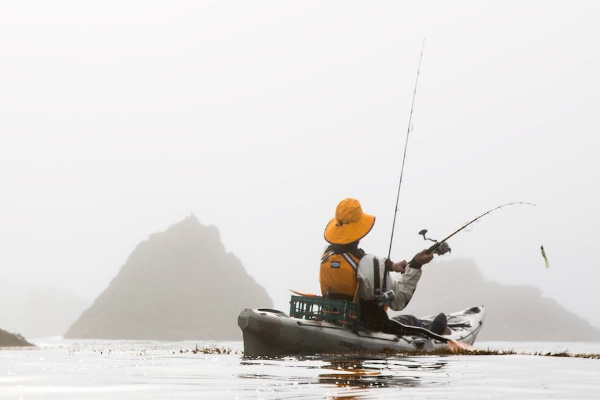
Catfishing from kayak can be an enriching experience. It’s a great way to get out on the water and enjoy some peaceful time fishing. However, there are a few things you need to keep in mind to stay safe while kayaking fishing for catfish.
- Wear a life jacket: Always wear a life jacket when fishing, even if you’re an experienced swimmer. Catfish can be large and put up quite a fight, so you don’t want to risk being pulled into the water if your kayak tips over.
- Go with friends: Kayak fishing is more fun with friends, and it’s also safer. If something happens to one of you, the other can help to safety.
- Know your limits: Don’t try to kayak in water that’s too deep or the currents that are too strong. It’s crucial to know your limitations and the capabilities of the kayak before heading out onto the water.
- Bring a phone: Always bring a phone with you in case of an emergency. You had better also let someone know where you’re going and when you’ll be back before heading out on your kayak fishing trip.
- Never anchor in a fast current: It’s essential to never anchor in a swift current because it can quickly pull your kayak downstream. If you need to anchor, find a spot where the current is slow or nonexistent. When you’re anchoring, use a quick-release system so that if necessary, the anchors can be detached quickly. This could involve using carabiner clips on trolleys or zigzag cleats when tying off directly to your kayak.
- Be aware of your surroundings: Be aware of what’s going on around you at all times. Pay attention to the weather, the other boats on the water, and any obstacles in the water.
- Bring a spare paddle: It’s always a good idea to bring a spare paddle in case you lose or break yours.
- Wear appropriate clothing: Wear clothing that will keep you warm and dry in case you end up in the water. Avoid cotton clothes because they will absorb water and make you colder. Instead, choose clothes made of synthetic materials or wool. You should also bring a spare set of clothes in case you get wet.
- Pack some food and water: Bring enough food and water for your entire kayak fishing trip. You never know when you might get stranded or spend an unexpected night on the water.
- Check the forecast: Always check the weather before heading out on your kayak fishing trip. If the forecast calls for bad weather, it’s best to postpone your trip.
- Have a plan: It’s essential to have a plan before heading out on any kayaking trip. This way, if something goes wrong, you’ll know what to do.
- Bring a whistle: A whistle can be a valuable signaling device if you find yourself in trouble.
Follow these safety tips. And you’ll have a fun and safe time kayak fishing for catfish!
Conclusion
Catfishing from a kayak can be a lot of fun and very rewarding. Make sure you have the proper gear, know where to go, and use the right bait and techniques, and you’re likely to catch yourself some dinner (or maybe even a big one!).
Most importantly, remember to stay safe – always wear your life jacket! Have you ever gone kayak fishing for catfish? Tell us about your experience in the comments below.
Thanks for reading our article. If you have any questions, leave a comment below. You can see more posts on our website here.
Further reading:
